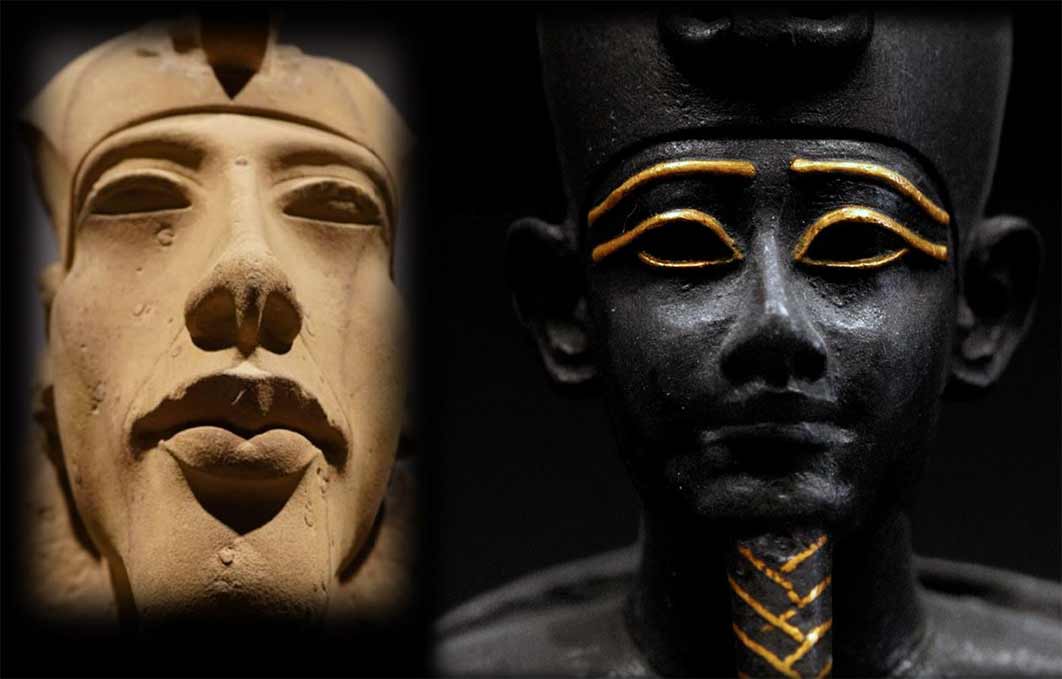
Akhenaten Heretic Pharaoh: The New Osiris
Did Egypt’s Heretic Pharaoh outlaw the God of the Dead, or become him? Akhenaten has been called ancient Egypt’s ‘Heretic Pharaoh’. From 1354-1337 BC Akhenaten so drastically altered his country’s religion, art, and mythology that his monuments were afterwards destroyed and his name was effectively erased from history until the 18th century AD. He has been called by many scholars the world’s first monotheist, because of his insistence in calling his god, the Aten sun disc, “the sole living god”. During his reign, he founded a new city called Akhet-Aten (modern day Amarna), reduced the role of the other gods of Egypt, persecuted their priests, and shut down their temples. He outlawed idols of gold, silver and gems, and banned the names of the gods, even banning the plural word for “gods”, netjer-u.

Bust of Akhenaten at the Egyptian Museum (CC BY-SA 2.5)
Akhenaten Abandoning Osiris
This sweeping proscription against the gods seems to have included perhaps the most popular god of ancient Egypt: Osiris. He was the god of fertility, the underworld (the Duat), and judge of the dead – therefore a deeply personal god to everyone in ancient Egypt. However, he seems to have become persona non grata under the new king, whose tomb and others offer no mention or image of him. Neither do they depict Ra the Sun god travelling through the 12 hours of the night and joining with Osiris. There are no images of pharaoh becoming an Osiris in the afterlife, or of Osiris presiding over and judging the dead, or of the dead enjoying the afterlife in his land, the ‘Fields of Aaru or Reeds’ – all of which were traditional tomb scenes. In fact, Osiris and his mythology appear to have been completely abandoned by the revolutionary new monarch.

Gardens and pools were associated with the afterlife in ancient Egyptian thought, and typically appear in conjunction with Osiris in art. Osiris and the Egyptian Resurrection, by E.A. Wallis Budge, 1911.
Despite this, Akhenaten and his courtiers still had tombs dug and decorated, they still had funerals, buried their dead, and believed in an eternal afterlife, as evidenced by inscriptions. The question becomes: what happened when the traditional world of Osiris - of fertility, chthonic mythology, and the afterlife - collided with Akhenaten’s new solar monotheism? Did the king really ban Osiris, or did he subsume him and his mythology under his new revolutionary rubric? Did he proscribe him, or pre-empt him in favor of becoming a “new Osiris”?

Facsimile painting from the ‘Green Room’ in the North Palace at Amarna by Nina de Garis Davies. This wonderful painting gives just a taste of what life would have been like at Amarna – full of aesthetic, naturalistic art. (Metropolitan Museum of Art)
Osiris The Fertility God
Osiris was considered a fertility god, and was often celebrated with rituals on threshing floors during harvest time. Osiris was maintainer of the waters of fertility, provided his followers with a reassurance of life after death, and although he was the Judge of the Dead, he was also associated with rebirth, so the festivals related with him tended to focus more on celebrating life. He was also credited with teaching humanity agriculture, the arts, religion, laws, and morality.




